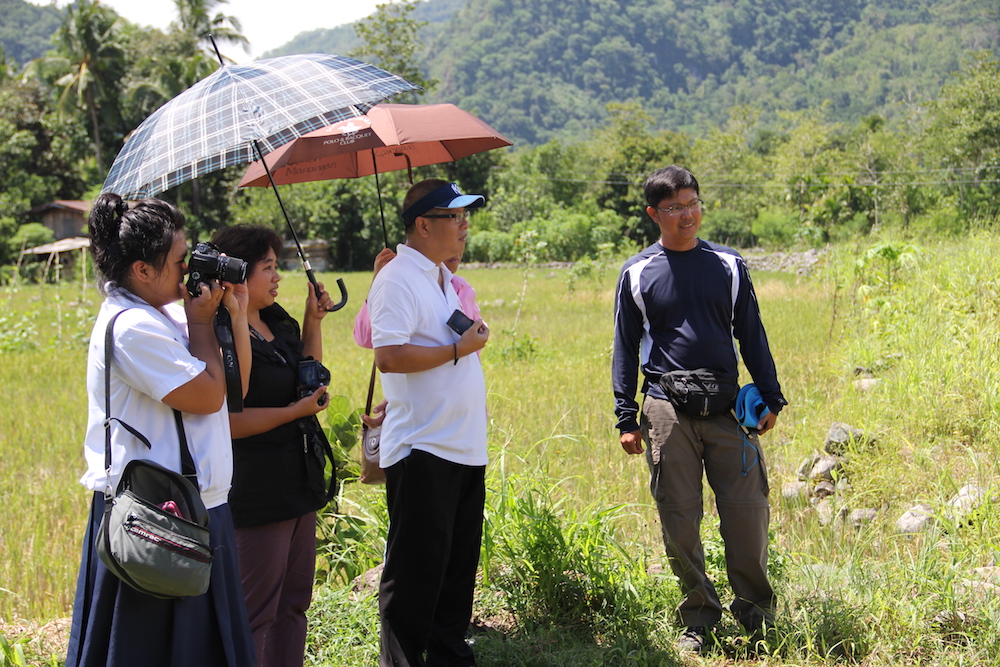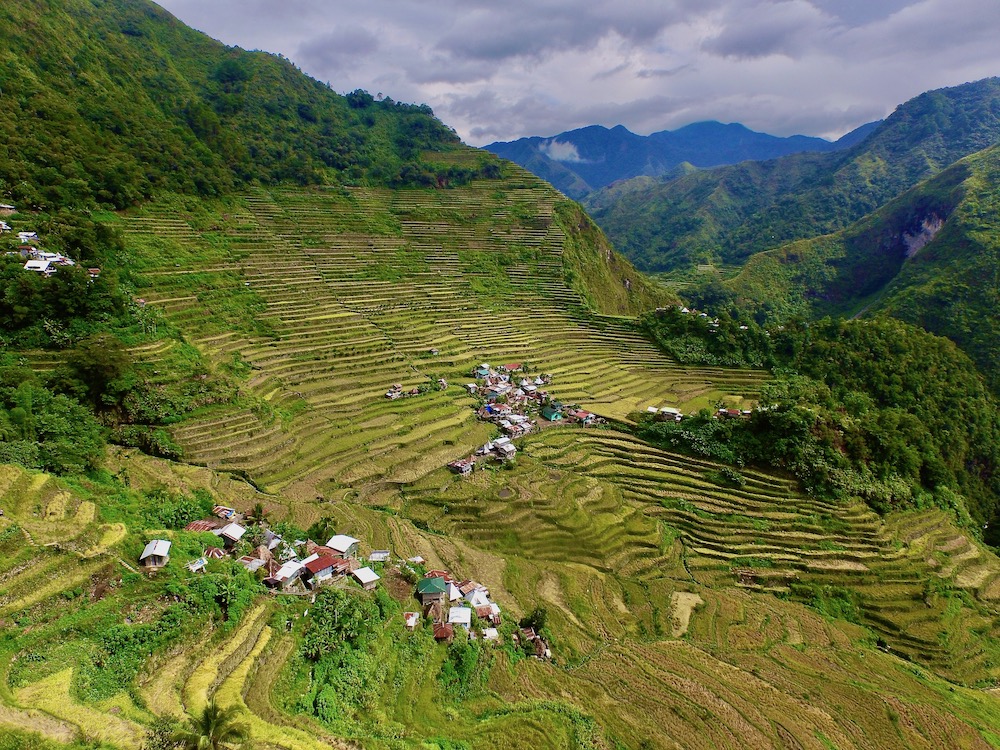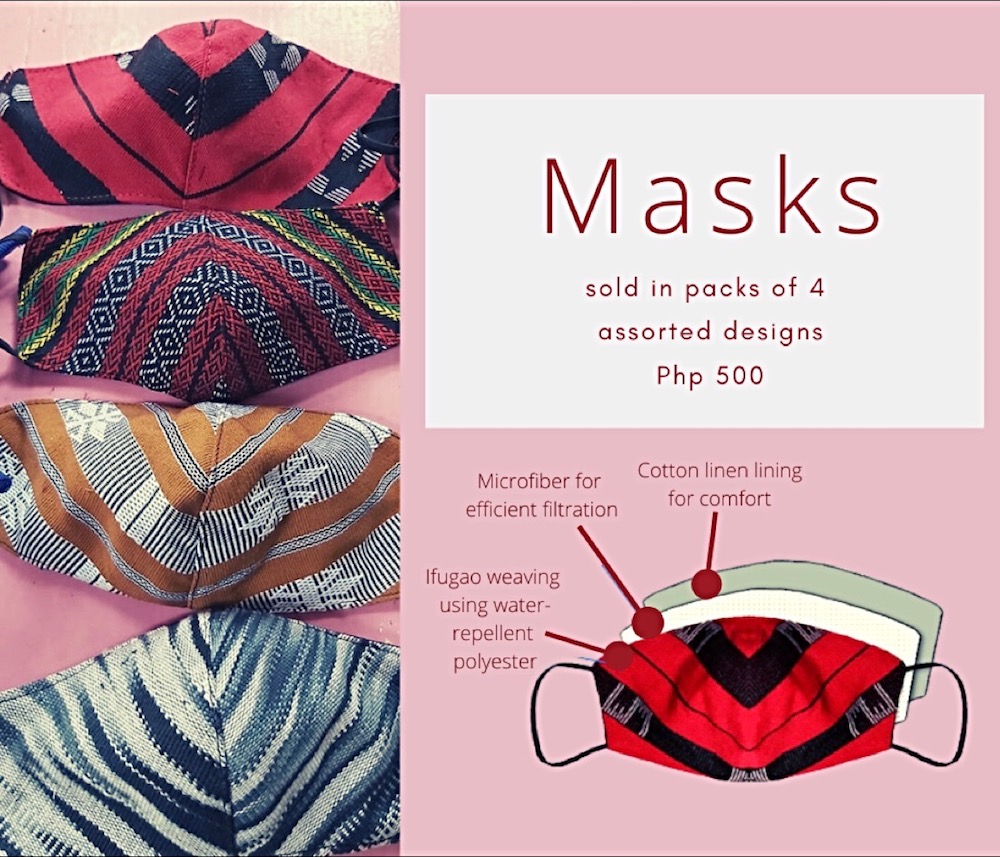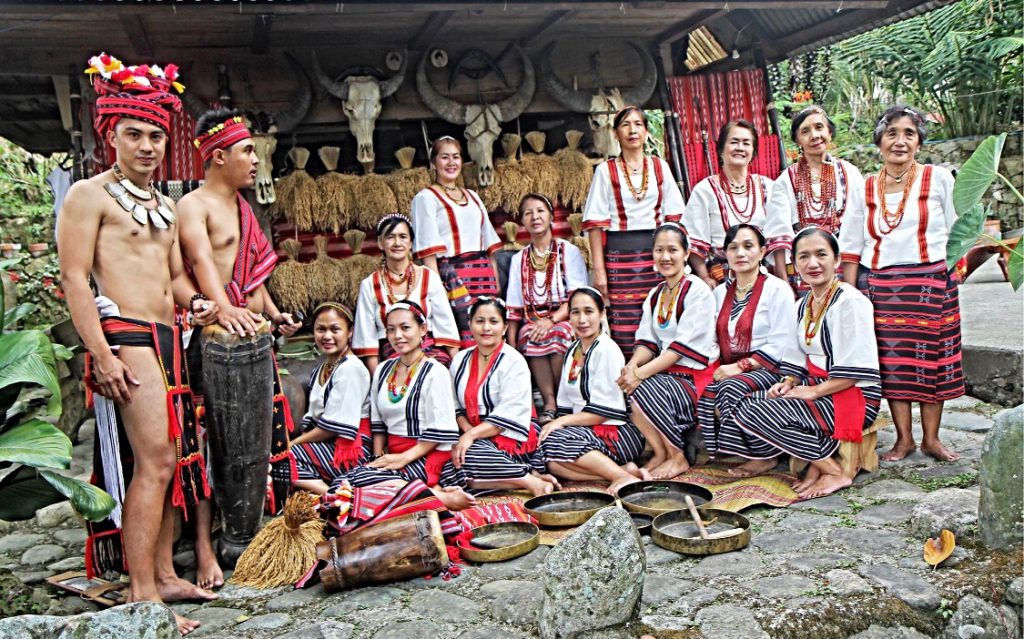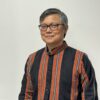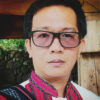Saving Ifugao Weaving in the Philippines
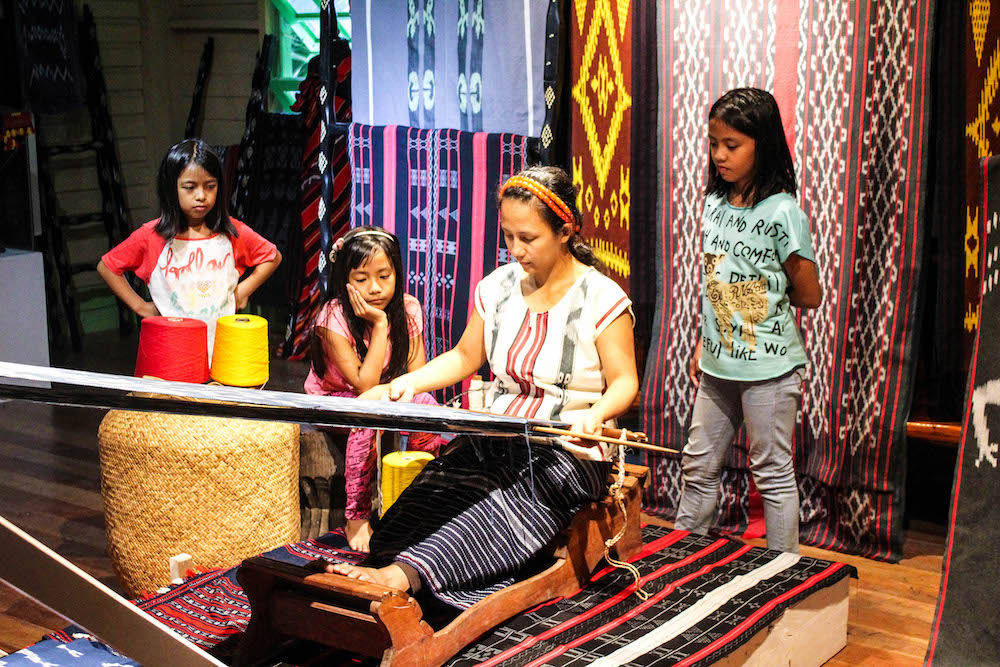
One cloudy July afternoon in 2019, a group of archaeology students from the University of California, Los Angeles, dropped by the town of Kiangan in Ifugao province, the Philippines, to learn about community-led heritage conservation. The students expected to see a few elders preserving a lost art; instead, they found a mix of women and men, elders and younger weavers, producing traditional textiles for a thriving industry.
The weavers are Ifugao, one of the Indigenous groups that inhabit the Philippine Cordillera, a mountainous region occupying the center of the island of Luzon. In the tropical forests and grassy highlands, covering an area approximately double the size of Los Angeles, about 200,000 Ifugao people have lived in traditional ways until the past 50 years. Today they (including co-author Marlon) live a modern lifestyle, with access to cable television, the internet, and adjacent urban centers’ malls, groceries, and McDonald’s. But they are also striving to maintain many of their traditional ways, from practicing the local religion and traditional farming, to applying customary laws to matters such as property inheritance and forestry.
In the Philippine school system, children have long been taught that the Ifugao were isolated peoples who successfully avoided Spanish colonization throughout the 1800s because of the rugged mountainous terrain of the Philippine Cordilleras, while only lowland Filipinos actively rebelled. As children, we were also told that the rice terraces in the region, which the Ifugao are world famous for, are at least 2,000 years old.
We now know, as a result of the archaeological work of co-author Stephen and colleagues, that these ideas are based on flawed premises. The rice terraces are far more recent, and their establishment was likely part of the Ifugao’s active attempt to become more self-sufficient in the face of Spanish colonizers.
To break the old myths, we helped establish the Ifugao Community Heritage Galleries in 2016, which now serve as the Indigenous Peoples Education (IPED) Center. It is a community-led effort headed by co-author Marlon, an Ifugao. It is, and is designed to be, for (not just about) the local community. Most cultural heritage conservation programs established previously in the Philippines have been largely top-down, funded by outsiders or the government, and driven by tourism. This center is by and for the local people.
The center presents archaeological evidence about the history of the rice terraces in the region, providing a venue for local communities and the larger Philippine society to rethink flawed historical narratives, and displays traditional Ifugao weaving. The center offers a place for weavers to practice their craft and ensures that the weavers earn a decent wage while helping to preserve an art that was in danger of dying out. As such, the center serves as a way to spread knowledge about the local community, help maintain traditions, and sustain stakeholder interest in heritage education.
The pressures exerted by the COVID-19 pandemic have demonstrated the success of the center in empowering locals and aiding those in need. The expensive, hand-woven textiles produced by the center, usually reserved for the kadangyan (Ifugao elite), have been fashioned into face masks to support farmers who could not afford to purchase any face masks, let alone ones made from traditional fabrics.
In earlier times, Ifugao customary law called upon the kadangyan to aid the disadvantaged. The collision of the pandemic with IPED has breathed new life into that old custom.
The Philippines were ruled by a Spanish colonial administration from 1565–1898 and were then annexed by the United States after it won the Spanish-American War of 1898. American control continued until 1946.
The United States government applied a similar catastrophic campaign to the Cordillera as it had used against Native Americans: a “benevolent assimilation” doctrine, with the goal of Americanizing the Ifugao. The U.S. instated an educational curriculum that largely ignored local history and focused instead on nationalistic narratives.
As a result of the cultural assimilation policies that centered on Americanization, in the Ifugao region today country music is popular, the older generation speaks fluent English but not the national language (Filipino), Christianity is common, and cowboy boots and hats are part of the mainstream dress. Much traditional knowledge has been lost.
American anthropologists of the first half of the 20th century assumed that the rice terraces they saw in the region must have taken thousands of years to establish, possibly built with the help of outsiders. This was just an assumption, but it has been embraced as fact by everyone, including UNESCO. The concept cements the idea that the Ifugao have long traditions in the area but also the pejorative notion that they weren’t capable of extraordinary feats without the benefit of time and help.
In 2012, I, Stephen, started the Ifugao Archaeological Project (IAP) as a continuation of my doctoral research at the University of Hawai’i at Mānoa. Through investigations of radiocarbon dates at archaeological sites, paleoethnobotanical reconstructions, faunal analysis, spatial modeling, and community stories, our team showed that the rice terraces are actually just 400 years old.
This shorter history of the terraces was contested at first by Ifugao communities until it was pointed out that the shift to wet-rice production may have been a key part of how they resisted Spanish colonization: It may have helped them to consolidate economic and political resources that allowed them to successfully defy Spanish colonial aims.
This story of their heritage gives a real sense of pride and knowledge. It has begun to be accepted.
IPED was established in part to share this story and to provide a place for the practice of traditional weaving. It was started with just a few thousand dollars donated by IAP students and is now supported by the profits from the textiles. The center receives about 10,000 local Ifugao visitors and about 5,000 nonlocal visitors annually. It also fulfills direct orders from customers from Manila, other Philippine cities, and abroad.
Previous cultural conservation efforts in Ifugao primarily established top-down programs that rely on government funding to maintain the infrastructure of the famous rice terraces. But rice produced in these terraces will never be economically viable; the terraces are not as extensive as lowland rice paddies, and they’re more expensive to maintain. What these programs failed to realize is that rice farming in the region is part of larger interrelated systems that sustain one another: swidden fields, managed forests, gardens, and crafts such as weaving and woodworking.
Communities should be able to reap the benefits of their own technology and design.
When we established the center, we envisioned the textile exhibit as a potential repository of the fabric designs and the stories that come with them. Traditional Ifugao weaving was in the throes of being lost: The last of the Kiangan Ifugao weavers were already in their 70s. Younger Ifugao did not have the opportunity to learn the craft, as economic and social pressures pushed them to do something else.
Co-author Marlon initiated a program with about 15 elderly weavers to use the center as a venue to discuss weaving technology and to spur younger generations to learn about weaving. This established the Kiyyangan Weavers Association (KIWA), named after the location of the archaeological site in Kiangan. KIWA members are obliged to take on at least one new apprentice every year. Within four years, the membership of the weaving organization tripled, with younger community members joining elderly weavers to carry on the tradition of Ifugao weaving.
The center provides weavers with cotton yarn and markets, and sells the textiles. As a result, what the weavers used to sell in the Banaue (a tourist town) market for 250 Philippine pesos (US$5) on consignment now earns at least 800 Philippine pesos (US$16) through the center. Weavers produce textiles that can be used for a traditional Ifugao outfit, as blankets and scarves, or as fabric for more modern dress designs. They use customary Ifugao colors of red, black, and white, but they have added contemporary iconography.
In March, the Philippine government enforced its COVID-19 enhanced community quarantine on the island of Luzon, with stringent measures to curb the spread of the virus. Public transport was banned and the use of face masks was made mandatory, both of which made it hard for farmers to bring their agricultural products to the town center.
In one farming village, farmers who walked for two hours with sacks of vegetables on their backs to sell at the public market were turned away on arrival because they were not wearing face masks. These subsistence farmers need to sell their few bundles of vegetables in order to buy essential household items. The situation was made worse when the price of commercial masks went up to as high as 50 Philippine pesos (US$1) per piece: more expensive than the bundles of beans that the farmers painstakingly bring to the market.
Hearing about the inaccessibility of masks, KIWA members volunteered to produce masks for free distribution to the community. While no one has formally studied the effectiveness of these masks, they should be more effective than simple cloths, as they use a microfiber layer to enhance filtration.
As the pandemic quarantines forced communities to stay put, Ifugao weavers produced more textiles, which became a hot item among expatriate Ifugao and in markets in Manila and abroad. This has further invigorated the revenue and custom of Ifugao weaving. The demand is so high that, for now, the center’s 45 weavers are unable to satisfy all their orders.
The success of IPED underscores the fact that sustainable heritage conservation involves an economic component. One of the main barriers in the conservation of the terraces is the absence of economic benefit from rice production. The decision to include weaving in the center’s programs was a conscious effort to include other traditional activities that could provide economic value.
Communities should be able to reap the benefits of their own technology and design, especially in a time where access to such information is expedited by technology. Empowering communities to produce and market their own products helps mitigate rampant cultural appropriation. In many places, entrepreneurs have co-opted the designs of Indigenous peoples without providing any compensation to the latter. At IPED, the Ifugao earn from their intellectual property.
However, it is also true that producing for the market has taken some of the cultural context of these textiles away. Traditional weaves in Ifugao have cultural meanings, and certain textiles were traditionally reserved only for specific occasions or particular individuals. The rapid assimilation of the Ifugao into the global economic and social system has eroded these ideas. In this case, any concerns about authenticity are an outside imposition, not from the community itself.
It is sometimes said that a thin line separates spectacle and heritage conservation. We argue that the line is blurry. Indigenous peoples in Ifugao are making their own history and producing new knowledge, even as old traditions are fading or changing.
The Ifugao communities that have invested time and effort in the archaeological project have taken control of their past, of their heritage. They now have a voice in their historical narratives. The community-led programs serve as a supplement, a counterpoint even, to top-down, government-run projects. We hope that this will eventually provide an empowering story that all Ifugao will learn about. Engagement and involvement create a path for decolonization and empowerment.































